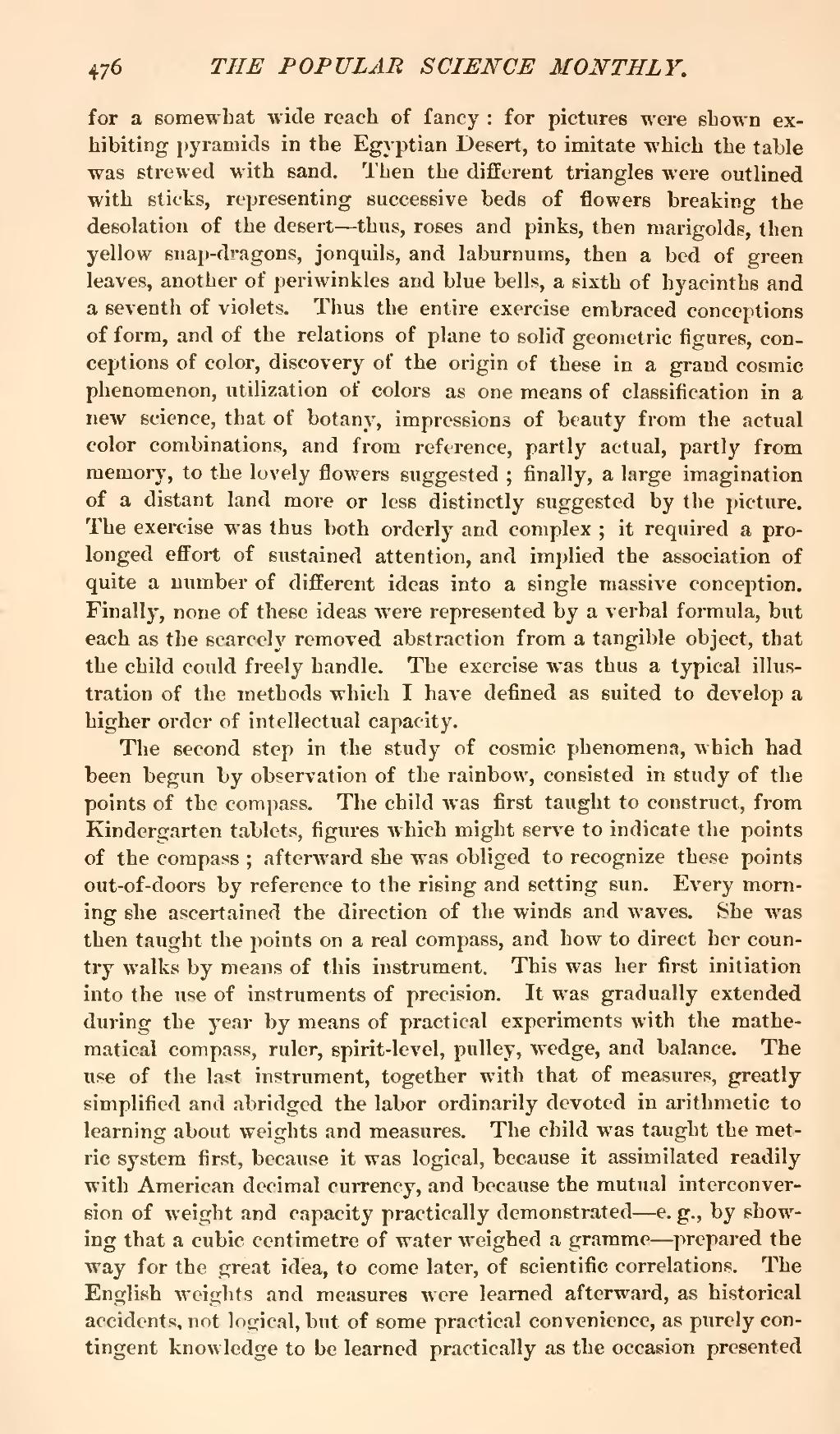for a somewhat wide reach of fancy: for pictures were shown exhibiting pyramids in the Egyptian Desert, to imitate which the table was strewed with sand. Then the different triangles were outlined with sticks, representing successive beds of flowers breaking the desolation of the desert—thus, roses and pinks, then marigolds, then yellow snap-dragons, jonquils, and laburnums, then a bed of green leaves, another of periwinkles and blue bells, a sixth of hyacinths and a seventh of violets. Thus the entire exercise embraced conceptions of form, and of the relations of plane to solid geometric figures, conceptions of color, discovery of the origin of these in a grand cosmic phenomenon, utilization of colors as one means of classification in a new science, that of botany, impressions of beauty from the actual color combinations, and from reference, partly actual, partly from memory, to the lovely flowers suggested; finally, a large imagination of a distant land more or less distinctly suggested by the picture. The exercise was thus both orderly and complex; it required a prolonged effort of sustained attention, and implied the association of quite a number of different ideas into a single massive conception. Finally, none of these ideas were represented by a verbal formula, but each as the scarcely removed abstraction from a tangible object, that the child could freely handle. The exercise was thus a typical illustration of the methods which I have defined as suited to develop a higher order of intellectual capacity.
The second step in the study of cosmic phenomena, which had been begun by observation of the rainbow, consisted in study of the points of the compass. The child was first taught to construct, from Kindergarten tablets, figures which might serve to indicate the points of the compass; afterward she was obliged to recognize these points out-of-doors by reference to the rising and setting sun. Every morning she ascertained the direction of the winds and waves. She was then taught the points on a real compass, and how to direct her country walks by means of this instrument. This was her first initiation into the use of instruments of precision. It was gradually extended during the year by means of practical experiments with the mathematical compass, ruler, spirit-level, pulley, wedge, and balance. The use of the last instrument, together with that of measures, greatly simplified and abridged the labor ordinarily devoted in arithmetic to learning about weights and measures. The child was taught the metric system first, because it was logical, because it assimilated readily with American decimal currency, and because the mutual interconversion of weight and capacity practically demonstrated—e. g., by showing that a cubic centimetre of water weighed a gramme—prepared the way for the great idea, to come later, of scientific correlations. The English weights and measures were learned afterward, as historical accidents, not logical, but of some practical convenience, as purely contingent knowledge to be learned practically as the occasion presented
